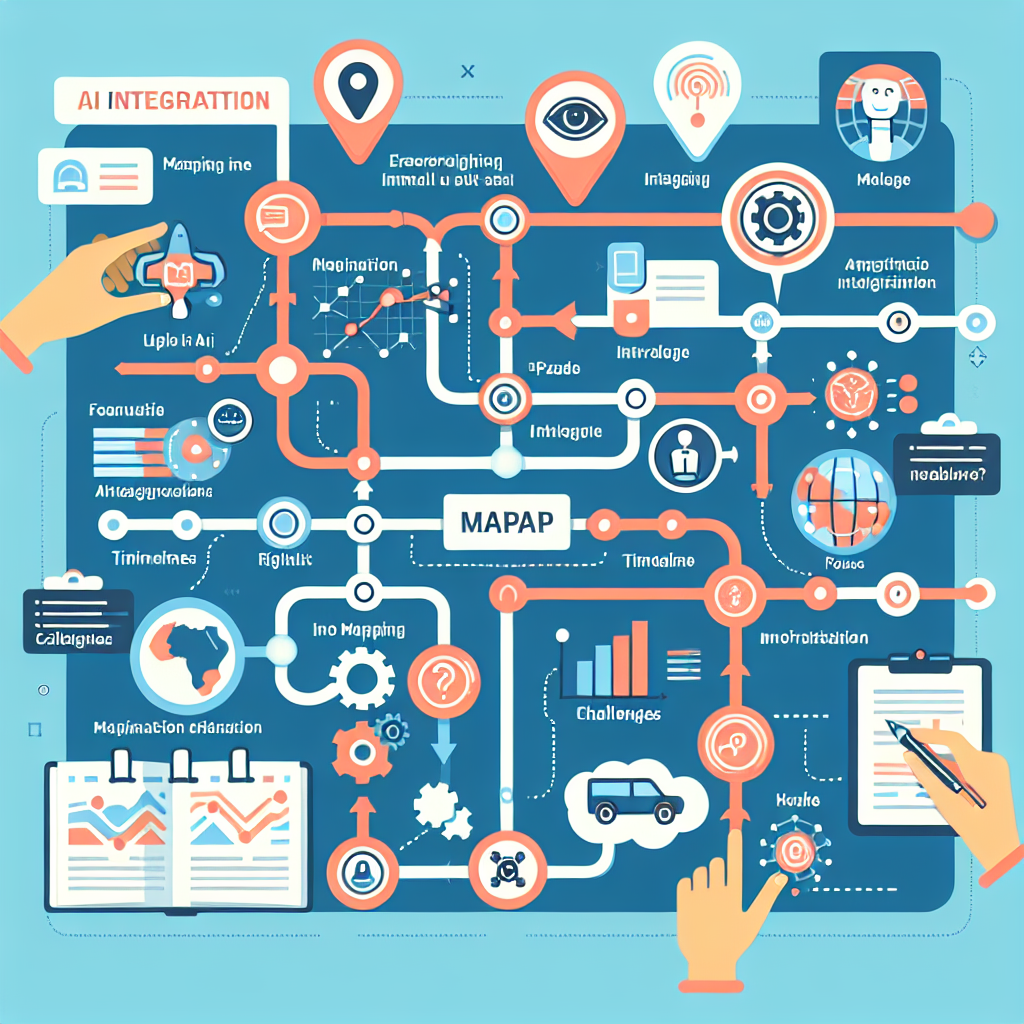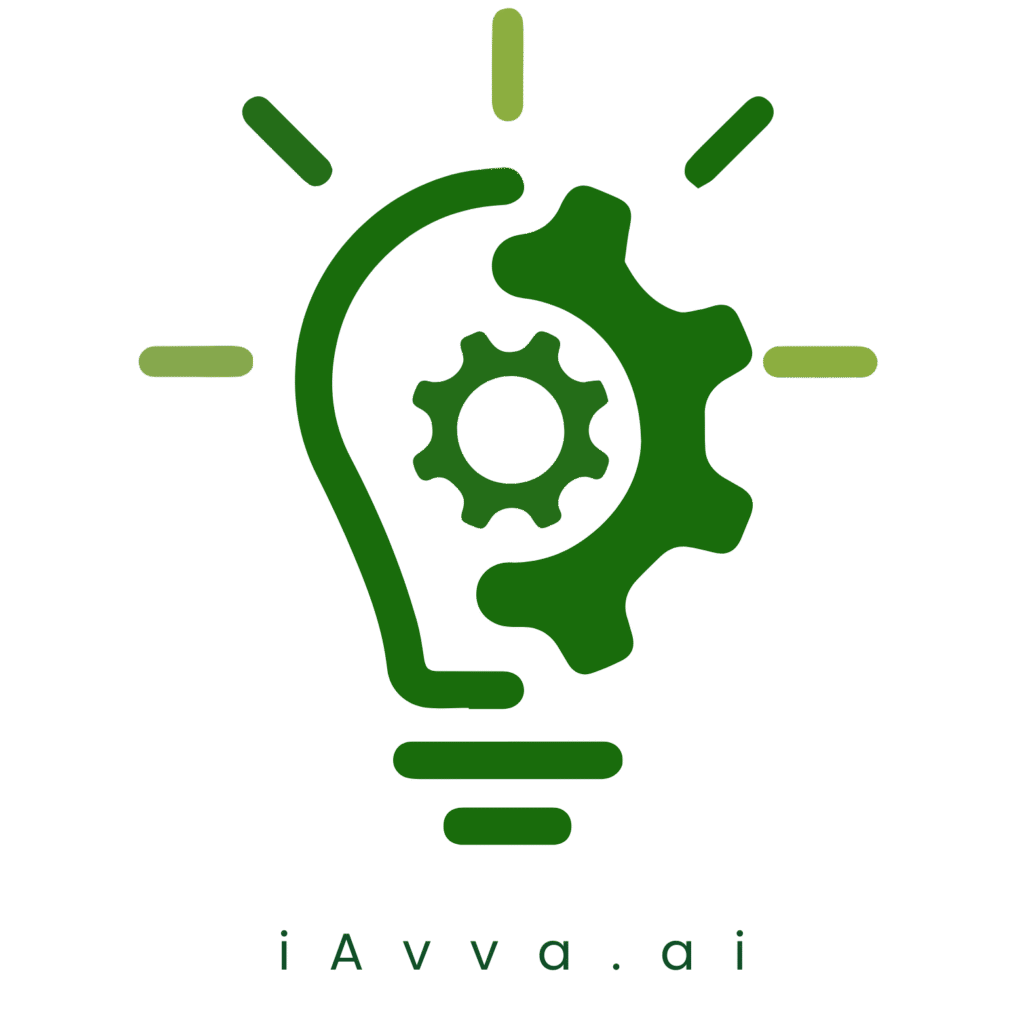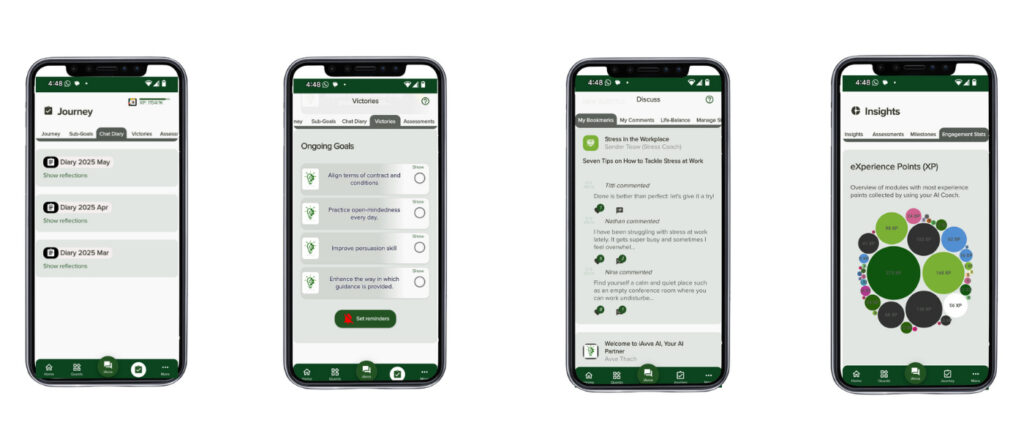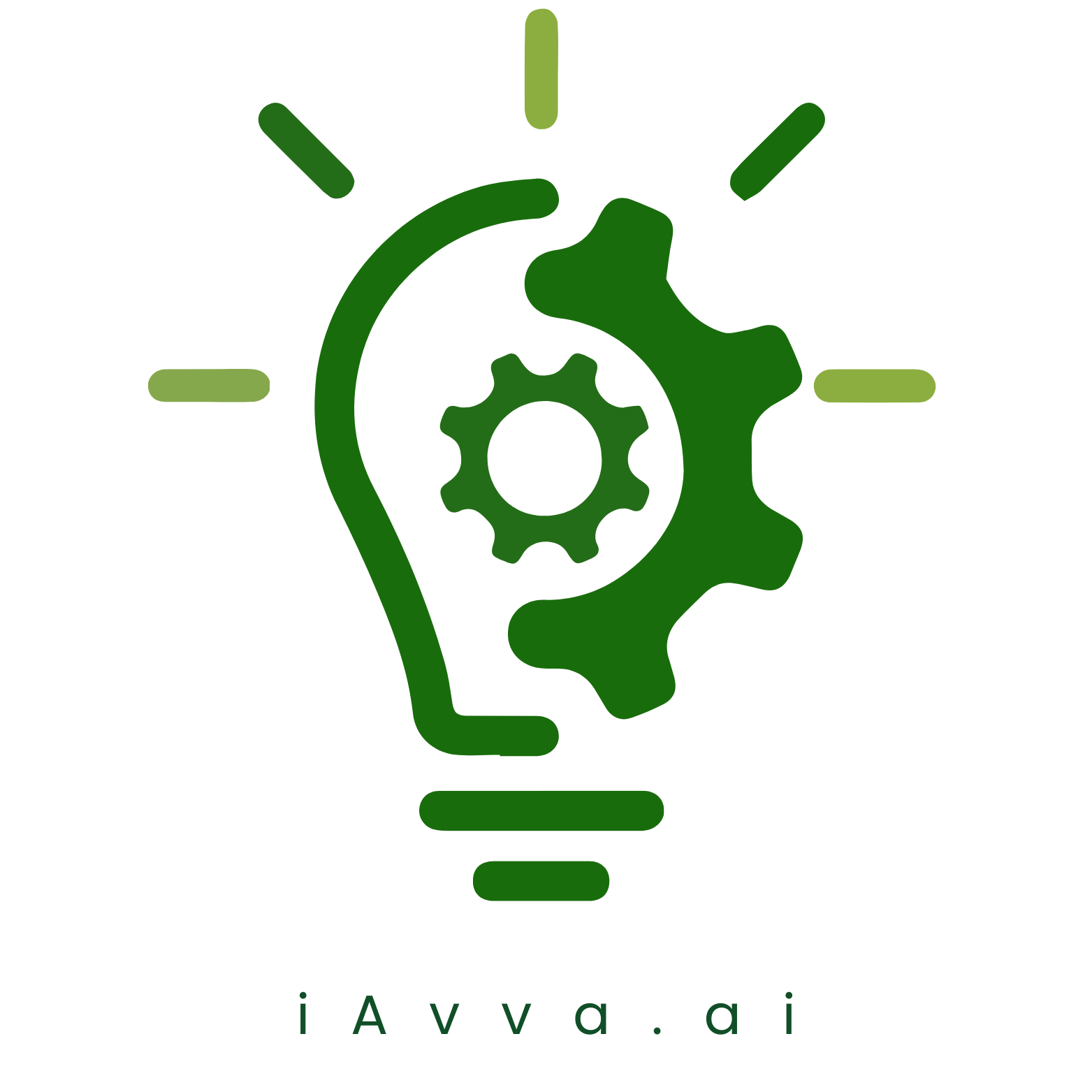Creating a Successful AI Implementation Roadmap: From Strategy to Execution
Introduction
Welcome to the world of artificial intelligence, where the future isn’t just bright it’s practically glowing! If you’re here, you probably understand that an AI implementation plan is not just a luxury; it’s a necessity for organizations looking to thrive in this digital age. But let’s face it: creating a successful AI deployment plan can feel like trying to assemble IKEA furniture without the instructions confusing and somewhat daunting.
Fear not! This guide will take you from the initial spark of an idea to the full-blown execution of your AI transformation plan. We’ll explore everything from developing an effective artificial intelligence strategy to crafting a comprehensive AI integration roadmap that aligns with your business goals. Think of it as your trusty roadmap for implementing artificial intelligence minus the traffic jams and detours.
As we dive into this journey, we’ll highlight key considerations for deploying AI solutions effectively, share best practices for AI implementation, and even discuss common pitfalls that could derail your plans faster than a cat chasing a laser pointer. By the end, you’ll be armed with actionable insights and strategies that will help you optimize business processes with your new AI technologies.
So buckle up! Whether you’re leading an enterprise AI implementation or just dipping your toes into machine learning project planning, this post is designed to equip you with everything you need for successful AI deployment strategies. Let’s get started on designing an AI implementation plan that not only meets but exceeds your expectations!

Understanding AI Implementation Plans
When it comes to navigating the complex world of artificial intelligence, having a solid AI implementation plan is like having a treasure map in uncharted waters. This plan serves as your guiding star, ensuring that every step you take is aligned with your ultimate goals.
Definition of AI Implementation Plan
An AI implementation plan outlines the specific steps and strategies needed to successfully deploy AI technologies within an organization. Think of it as your personal GPS for the journey of implementing AI solutions without it, you might just end up in a digital Bermuda Triangle!
Importance of a Well-Structured Plan
A well-structured plan is crucial for several reasons:
- Clarity: It provides clear objectives and outcomes, ensuring everyone is on the same page.
- Resource Allocation: Identifies necessary resources time, budget, and personnel so you’re not left scrambling at the last minute.
- Risk Management: Helps identify potential pitfalls and challenges ahead of time, allowing for proactive measures.
- Alignment with Business Goals: Ensures that your AI initiatives align with broader business objectives, making the transformation more impactful.
Takeaway: A comprehensive AI implementation plan not only streamlines the deployment process but also enhances overall organizational efficiency. Without it, you’re just hoping for the best!
The true magic happens when you integrate this plan into an overarching artificial intelligence strategy. This strategy should encompass everything from project planning to execution strategies, ensuring that your organization isn’t just implementing AI for the sake of it but rather to drive meaningful change.
The Role of an AI Adoption Framework
Your AI implementation plan should also consider an effective AI adoption framework. This framework guides how teams will embrace these new technologies while minimizing resistance. After all, no one wants to be that person who’s stuck in their ways while everyone else is cruising on autopilot!
A Comprehensive Approach
The best practices for creating an effective AI implementation plan involve:
- Cross-Functional Collaboration: Engaging different departments ensures diverse perspectives are considered.
- Pilot Programs: Testing small-scale implementations allows for adjustments before full-scale rollout.
- User Training: Equipping employees with necessary skills fosters confidence and buy-in during the transition.
- Continuous Evaluation: Monitoring outcomes post-implementation helps refine processes and optimize performance over time.
A well-crafted AI implementation plan can be the difference between success and failure in deploying artificial intelligence solutions effectively.
In summary, understanding how to design an effective AI implementation plan is pivotal in today’s tech-driven landscape. By aligning business goals with strategic deployment plans and integrating feedback loops along the way, organizations can navigate their way through successful AI transformations without losing their compass!
Developing Your Artificial Intelligence Strategy
Creating a successful AI implementation plan is like crafting a fine dish; it requires the right ingredients, careful preparation, and a dash of creativity. To whip up your own artificial intelligence strategy, you’ll want to follow these essential steps:
- Assessing Organizational Needs and Goals: Start by diving deep into your organization’s objectives. What problems are you trying to solve? How can AI streamline operations or enhance customer experiences? Aligning your AI strategy with business goals is crucial for success.
- Identifying Key Stakeholders and Resources: Who’s on your team? Gather a diverse crew that includes IT, operations, and any other relevant departments. This cross-functional collaboration ensures that everyone’s insights are considered. Plus, it fosters buy-in from all corners of the organization.
- Establishing Success Metrics and KPIs: You can’t improve what you don’t measure! Define clear metrics for success think increased efficiency, reduced costs, or enhanced customer satisfaction. These key performance indicators (KPIs) will guide you throughout the implementation process.
But wait! Before you dive headfirst into your AI integration roadmap, here are some common misconceptions to clear up:
- Myth #1: AI is a one-size-fits-all solution. Not true! Each organization has unique needs that require tailored AI solutions.
- Myth #2: Implementing AI is just about technology. Spoiler alert: It’s also about people! Training and change management are vital for successful adoption.
- Myth #3: AI will replace human jobs entirely. In reality, it’s more about augmentation empowering employees to work smarter alongside AI tools.
Key Takeaway: A well-thought-out artificial intelligence strategy not only aligns with business goals but also considers the human element in AI adoption. Remember, technology should serve people, not replace them!

Creating an AI Deployment Plan
So, you’re ready to dive into the deep end of AI implementation? Great choice! But before you cannonball into the pool, let’s make sure you have your floaties on. An AI deployment plan is your life raft in this sea of technology. It’s essential for steering your organization towards successful AI integration.
Defining Scope and Objectives of AI Projects
The first step in crafting your AI implementation plan is to clearly define the scope and objectives of your projects. What are you hoping to achieve? Are you looking to automate processes, enhance customer experiences, or perhaps analyze data like a pro? Be specific!
- Identify Key Problems: What issues are you aiming to solve with AI?
- Set Clear Goals: Use SMART criteria (Specific, Measurable, Achievable, Relevant, Time-bound) to outline what success looks like.
- Engage Stakeholders: Get input from all relevant parties this isn’t a solo mission!
Selecting Appropriate AI Technologies and Tools
Your next move is akin to picking the right tools for a DIY project. You wouldn’t use a hammer when you need a screwdriver so why choose the wrong technology for your AI needs?
- Research Available Options: Look at various technologies that align with your objectives.
- Consider Scalability: Choose tools that can grow with your business needs.
- Pilot Programs: Test out technologies on a small scale before full deployment.
Budgeting for AI Implementation Costs
No one likes surprises especially when it comes to money! Creating a budget for your AI deployment plan is crucial. Here’s how to avoid financial pitfalls:
- Estimate Costs: Factor in software licensing, hardware upgrades, training programs, and ongoing maintenance.
- Create Contingency Plans: Set aside funds for unexpected expenses; they always pop up when you least expect them!
- Evolve Your Budget: As projects progress, revisit and adjust the budget as necessary.
Key Takeaway: A well-crafted AI deployment plan not only sets clear expectations but also aligns resources effectively. This strategic approach ensures a smoother transition into the world of artificial intelligence.
This is just the beginning! With these foundational steps laid out in your AI implementation plan, you’re well on your way to designing an effective strategy that aligns with business goals and optimizes processes. Remember: planning today leads to successful execution tomorrow!
Designing an AI Integration Roadmap
When it comes to crafting your AI implementation plan, think of your integration roadmap as the GPS for your journey into the world of artificial intelligence. Without it, you might find yourself lost in a maze of data and algorithms, wondering how on earth you got there!
Your AI integration roadmap should be a detailed guide that outlines how to weave AI solutions into the fabric of your existing systems. Here are some essential steps to consider:
- Mapping Out the Integration Process: Start by identifying where AI can fit within your current operations. This means analyzing existing workflows and pinpointing areas where automation or machine learning can enhance efficiency. It’s like finding the perfect puzzle piece that completes your picture.
- Identifying Potential Challenges: Every great adventure has its obstacles. Anticipate potential roadblocks such as data silos, resistance from teams, or technology gaps. By identifying these challenges early, you can develop mitigation strategies think of it as packing an umbrella for a rainy day!
- Creating a Timeline for Implementation Phases: Just like planning a road trip, you need a timeline that breaks down each phase of implementation. Set realistic deadlines for pilot testing, full-scale deployment, and evaluation stages. This will help keep your team on track and ensure everyone knows what’s coming next.
Key Takeaway: A well-structured AI integration roadmap not only aligns with your overall business goals but also prepares your organization for smooth transitions and efficient deployments.
As you design this roadmap, remember: flexibility is key! The landscape of AI is ever-evolving; being able to adapt your plans in response to new insights or technological advancements will be crucial for success.

Steps for Implementing AI Solutions Successfully
Implementing AI solutions is not just a tech-savvy endeavor; it’s akin to orchestrating a symphony where every instrument must harmonize to create beautiful music. Here’s how to ensure your AI implementation plan strikes the right chords:
- Pilot Testing and Feedback Collection: Before going full throttle, conduct pilot tests. Think of this as the dress rehearsal before the big show. Gather insights from users and stakeholders about what works and what doesn’t. This feedback loop is crucial for refining your AI systems.
- User Training and Adoption Strategies: You wouldn’t hand someone a new gadget without showing them how it works, right? Equip your team with the necessary training to foster smooth adoption. Create user manuals, host workshops, or even fun training sessions that encourage questions and hands-on practice.
- Full-Scale Rollout Considerations and Adjustments: Once you’re confident in your pilot results, it’s time for the grand rollout! But remember, flexibility is key. Monitor performance closely during this phase and be ready to make adjustments based on real-world usage. Think of it as tuning your instrument after each performance.
Key Takeaway: Successful AI deployment strategies hinge on iterative testing, comprehensive training, and responsive adjustments. Don’t rush; take the time to ensure each step aligns with your overall AI transformation plan.
Incorporating these steps into your AI integration roadmap will not only enhance user satisfaction but also optimize business processes significantly. Remember, the goal isn’t just to implement AI; it’s about creating an ecosystem where both technology and people thrive together!
Best Practices for AI Implementation
Implementing an AI implementation plan is more than just flipping a switch; it’s about orchestrating a symphony of strategy, technology, and people. Here are some best practices to ensure your melody hits all the right notes:
- Engaging Leadership Support: Secure buy-in from the top brass early on. When leadership is on board, it not only boosts morale but also ensures that resources are allocated effectively. Think of them as your AI cheerleaders, rallying the troops and keeping everyone aligned.
- Fostering a Culture of Innovation: Encourage teams to think outside the box (or inside it who knows?). A culture that embraces experimentation will help you adapt quickly to changes. Remember, innovation isn’t just a buzzword; it’s the lifeblood of successful AI adoption.
- Continuous Monitoring and Evaluation: Post-implementation, keep your eyes peeled! Regularly assess outcomes against your success metrics and KPIs. This isn’t just a check-the-box activity; it’s about fine-tuning your approach for maximum impact. If something isn’t working, pivot like a pro!
- Iterative Learning: Implementing AI solutions is not a one-and-done deal. Embrace an iterative approach where feedback loops are built into every phase of your project planning. This allows teams to learn from pilot tests and user experiences, making necessary adjustments along the way.
- Invest in Training and Development: Equip your workforce with the skills they need to thrive in an AI-driven landscape. Tailored training programs can transform skepticism into enthusiasm, turning employees into advocates for your AI initiatives.
- Cross-Functional Collaboration: Silos are so last season! Foster collaboration between departments to create a holistic view of how AI can optimize business processes across the board. When finance talks to IT, and marketing chats with operations, magic happens!
Key Takeaway: Successful AI deployment strategies hinge on strong leadership support, a culture that embraces change, continuous evaluation, and cross-functional teamwork.

Aligning Business Goals with AI Implementation Plans
When it comes to implementing artificial intelligence solutions, aligning your business goals with your AI implementation plan is not just a nice-to-have it’s a must-have. Think of it as the GPS for your AI journey: without it, you might end up lost in the wilderness of tech jargon and missed opportunities.
Cascading Objectives from Company Vision to Project Goals
Start by cascading your company’s overarching vision down to specific project goals. This means taking that lofty mission statement and breaking it into bite-sized, actionable objectives that can be tackled by your teams. Here’s how:
- Identify Core Values: What does your organization stand for? Make sure these values are reflected in your AI initiatives.
- Set SMART Goals: Specific, Measurable, Achievable, Relevant, and Time-bound objectives help ensure clarity and focus.
- Create a Feedback Loop: Regularly revisit these goals to ensure they remain aligned with changing business needs and market conditions.
The Role of Cross-Functional Collaboration in Alignment Efforts
No one likes working in silos especially when implementing an AI transformation plan. Cross-functional collaboration is essential for aligning business goals with your AI deployment plan. Here’s why:
- Diverse Perspectives: Involve stakeholders from various departments (like IT, HR, finance) to gather insights that enrich the implementation process.
- Shared Responsibility: When everyone has a stake in the outcome, accountability increases. This leads to more cohesive teamwork and smoother execution.
- Avoiding Misalignment: Regular check-ins between teams can prevent miscommunication and ensure everyone is aligned regarding objectives and outcomes.
Key Takeaway: Aligning business goals with AI implementation plans not only enhances project success rates but also fosters a culture of innovation throughout the organization.
In conclusion, aligning business goals with an effective AI integration roadmap is crucial for maximizing the impact of your AI initiatives. By cascading objectives and promoting cross-functional collaboration, you’ll set yourself up for a successful rollout strategy that not only meets but exceeds expectations. Ready to dive into the world of AI? Let’s get started!
The Future of AI Transformation in Organizations
As we look ahead, the landscape of AI in organizations is evolving faster than a caffeinated squirrel on a sugar rush. The future of AI transformation is not just about implementing new technologies; it’s about reshaping entire business models and rethinking how we operate.
- Emerging trends in AI technology adoption: Organizations are increasingly leaning toward automated decision-making and predictive analytics. This means more companies will be using AI not just for data processing but for strategic foresight.
- The impact of successful implementations on business growth: According to recent studies, businesses that effectively utilize AI see an average increase of 20-30% in operational efficiency. This isn’t just fluff; it translates to real dollars and cents!
- Case studies showcasing effective transformations: Consider Company X, which integrated an AI system into its supply chain management. They reported a reduction in costs by 15% within six months, demonstrating how an effective ai implementation plan can lead to significant ROI.
Key Takeaway: The path to successful AI transformation lies in aligning your ai implementation plan with your business goals. Companies that prioritize this alignment are more likely to experience profound growth and operational improvements.
- < li >Emerging trends in AI technology adoption
- The impact of successful implementations on business growth
- Case studies showcasing effective transformations </ li ></ ul ></ section >






















Leave a Reply